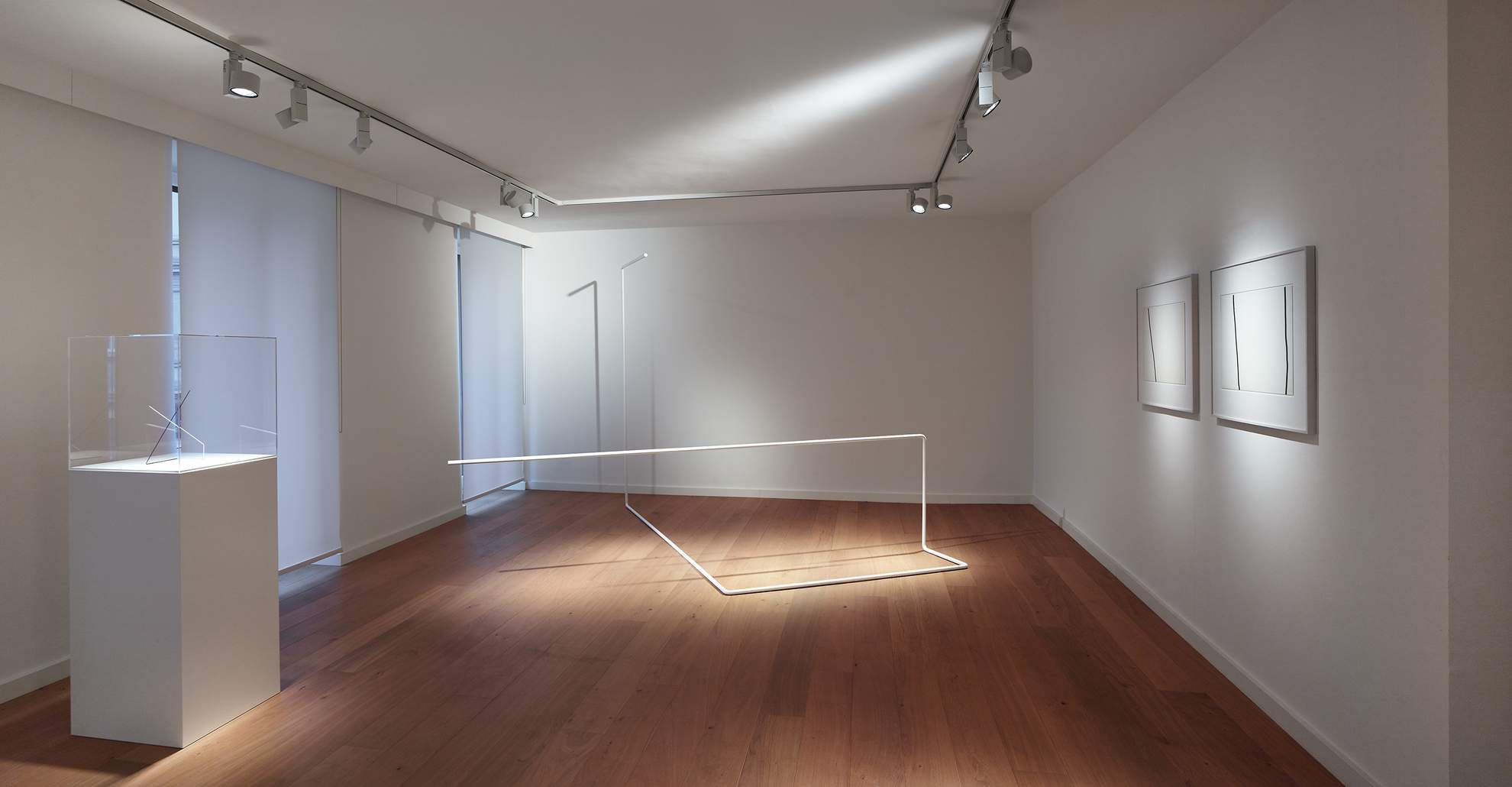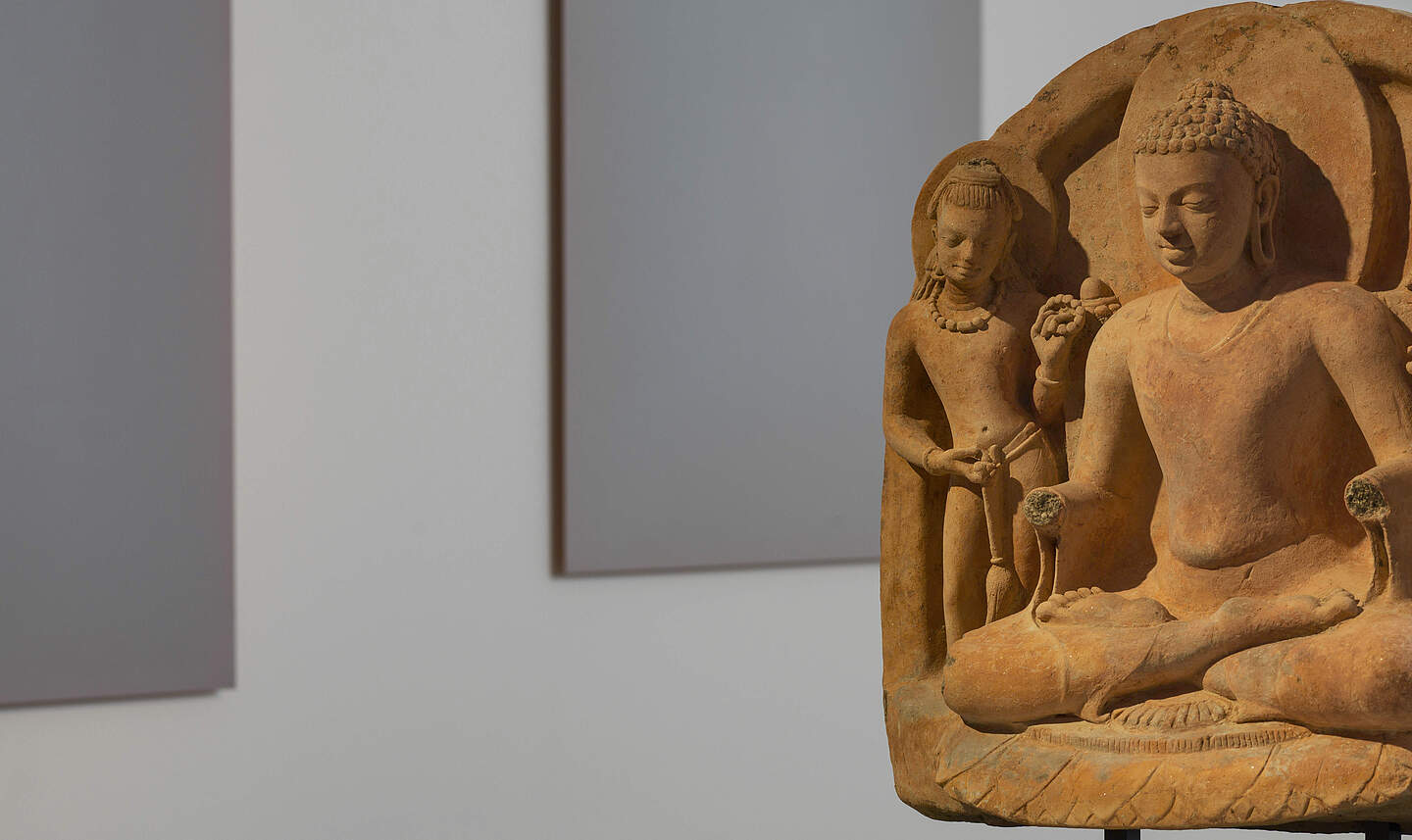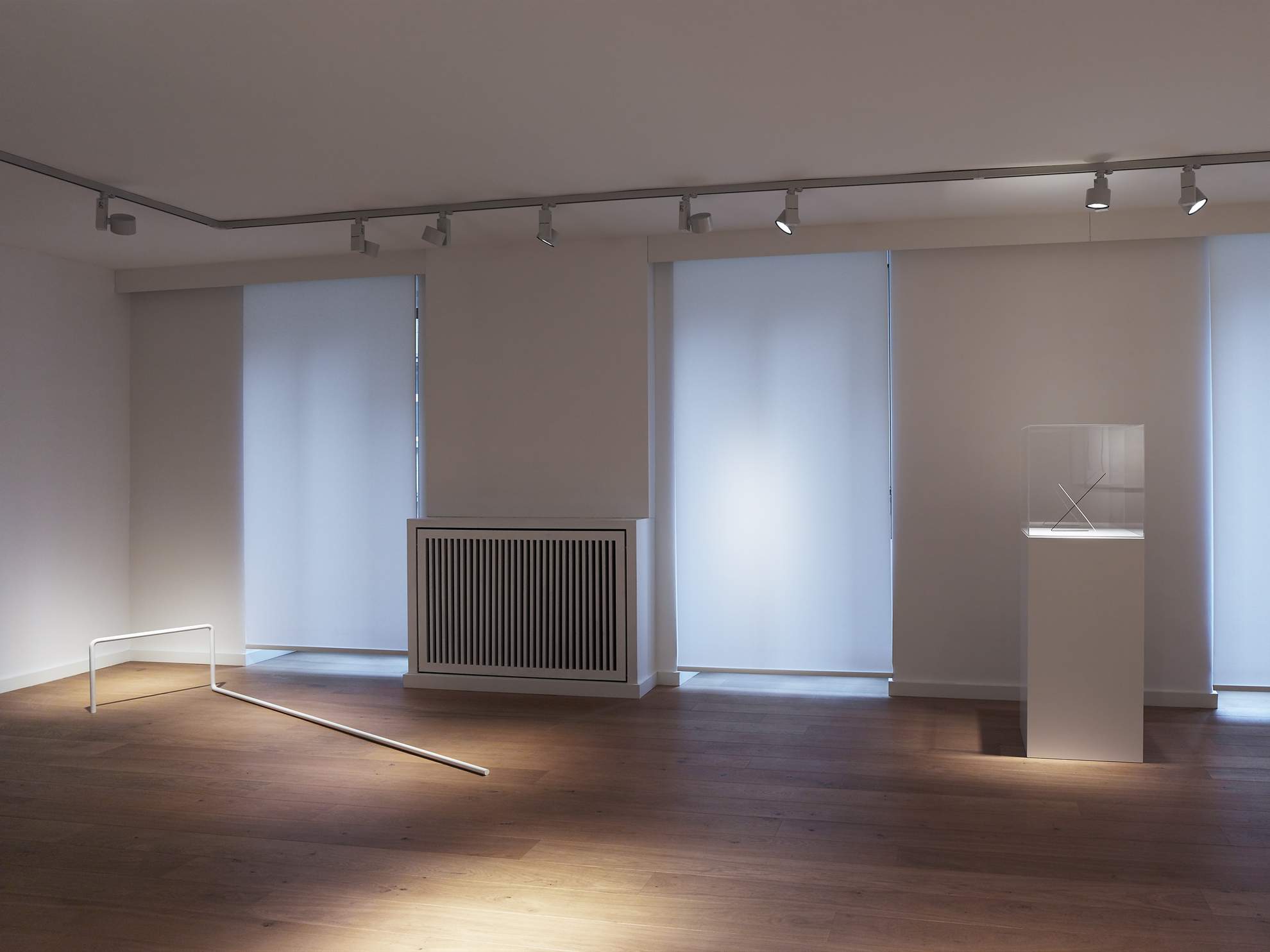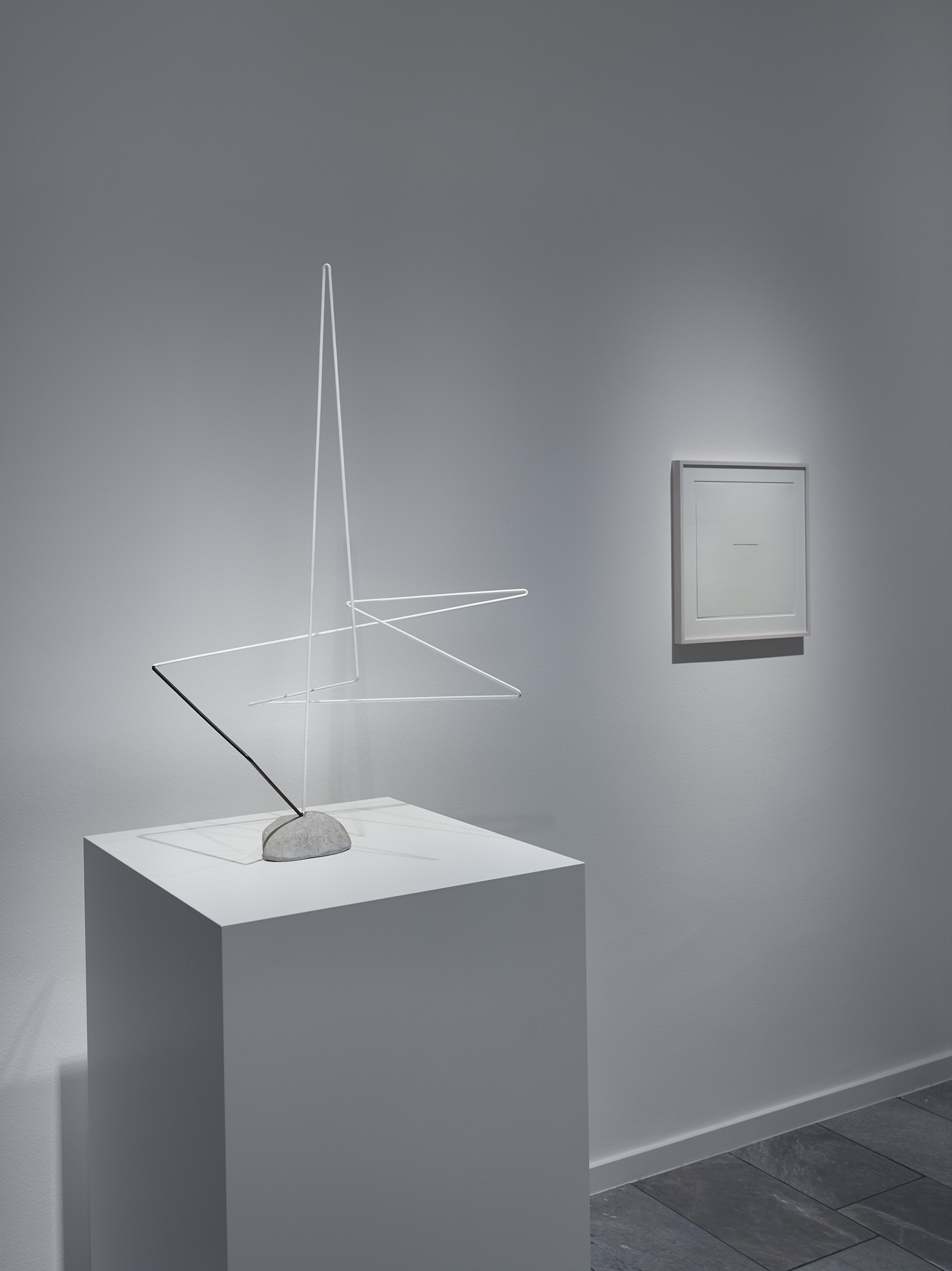
Norbert Kricke - Movement and Space
Zurich
Radical pioneer of post-war art
With his reduced sculptures, driven to the most extreme abstraction, and his graphic works that are just as distinctive, Norbert Kricke (1922-1984) is one of the striking artist personalities of German post-war modernity. The Galerie am Paradeplatz/ Zurich dedicates its complete stand (A021) at this year’s Cologne Fine Art (17.–20. 11. 2016) to this artist, who faded from the international spotlight after an amazing career in the Sixties. On presentation are about a dozen sculptures made of steel wire and tube and as many drawings by Kricke made between 1950, the ‚year of birth’ of the abstract Kricke, and the death of the long-standing principal of the Kunstakademie in Dusseldorf.
I am surprised that his style reappears
only with the introduction of minimalism
as a radical change in art,
i.e. with artists such as Fred Sandback.
In this sense, Kricke is
a true pioneer of minimalism.
Dierk Dierking
„Norbert Kricke is an artist who for some incomprehensible reason has not yet been duly acknowledged, especially with regard to the present international scene’ says gallery owner Dierk Dierking: „I am surprised that his style reappears only with the introduction of minimalism as a radical change in art, i.e. with artists such as Fred Sandback. In this sense, Kricke is a true pioneer of minimalism.
With the idea of a complete new beginning in art after the end of the Nazi regime – similar to the contemporaneous ZERO group around Mack and Piene – he wanted his works to give individual freedom an exterior form. I do not want real space and real movement (mobile), I want to depict movement, as Kricke encapsulated his independent creation.
He created sculptures whose steel tubes, bent at a right angle to begin with, make the viewer imagine a dynamic movement when seen vertically and a surface when seen horizontally: criteria of space and time that appear in the imagination of the viewer through the freedom of his very own perception. Rather space shaper than sculptor, Kricke in his drawings also does away with any representation of conventional volumes whatsoever. The viewer’s mind adds physical dimension to the dynamic tube works, now also acute-angled, such as Raumplastik (1954). Drawings (untitled, 74/032 of 1974) with their few, often single lines remind of irregular segments of a circle, and their positioning on the paper format is always well thought out.
There can be no question of ‚sculptor’s drawings’ as a preliminary to the creation of his sculptures in these radical and completely autonomous sheets, whose abstract motives playfully exceed border and frame in their graphic terseness. The individual work, but even more so the almost museum-like body of work shown at the stand of the Galerie am Paradeplatz illustrates the mental dimensions of the sculptor and illustrator, as resumed by the expert on Kricke, Dr. Ernst-Gerhard Güse: They convince by resoluteness and boldness and ultimately mean a message to mankind and its rapport with the world. Following the Cologne Fine Art, the exhibition will be shown at the premises of the Galerie am Paradeplatz in Zurich as from the beginning of December.
Norbert Kricke - Movement and Space
Zurich
I am surprised that his style reappears
only with the introduction of minimalism
as a radical change in art,
i.e. with artists such as Fred Sandback.
In this sense, Kricke is
a true pioneer of minimalism.
Dierk Dierking
Radical pioneer of post-war art
With his reduced sculptures, driven to the most extreme abstraction, and his graphic works that are just as distinctive, Norbert Kricke (1922-1984) is one of the striking artist personalities of German post-war modernity. The Galerie am Paradeplatz/ Zurich dedicates its complete stand (A021) at this year’s Cologne Fine Art (17.–20. 11. 2016) to this artist, who faded from the international spotlight after an amazing career in the Sixties. On presentation are about a dozen sculptures made of steel wire and tube and as many drawings by Kricke made between 1950, the ‚year of birth’ of the abstract Kricke, and the death of the long-standing principal of the Kunstakademie in Dusseldorf.
„Norbert Kricke is an artist who for some incomprehensible reason has not yet been duly acknowledged, especially with regard to the present international scene’ says gallery owner Dierk Dierking: „I am surprised that his style reappears only with the introduction of minimalism as a radical change in art, i.e. with artists such as Fred Sandback. In this sense, Kricke is a true pioneer of minimalism.
With the idea of a complete new beginning in art after the end of the Nazi regime – similar to the contemporaneous ZERO group around Mack and Piene – he wanted his works to give individual freedom an exterior form. I do not want real space and real movement (mobile), I want to depict movement, as Kricke encapsulated his independent creation.
He created sculptures whose steel tubes, bent at a right angle to begin with, make the viewer imagine a dynamic movement when seen vertically and a surface when seen horizontally: criteria of space and time that appear in the imagination of the viewer through the freedom of his very own perception. Rather space shaper than sculptor, Kricke in his drawings also does away with any representation of conventional volumes whatsoever. The viewer’s mind adds physical dimension to the dynamic tube works, now also acute-angled, such as Raumplastik (1954). Drawings (untitled, 74/032 of 1974) with their few, often single lines remind of irregular segments of a circle, and their positioning on the paper format is always well thought out.
There can be no question of ‚sculptor’s drawings’ as a preliminary to the creation of his sculptures in these radical and completely autonomous sheets, whose abstract motives playfully exceed border and frame in their graphic terseness. The individual work, but even more so the almost museum-like body of work shown at the stand of the Galerie am Paradeplatz illustrates the mental dimensions of the sculptor and illustrator, as resumed by the expert on Kricke, Dr. Ernst-Gerhard Güse: They convince by resoluteness and boldness and ultimately mean a message to mankind and its rapport with the world. Following the Cologne Fine Art, the exhibition will be shown at the premises of the Galerie am Paradeplatz in Zurich as from the beginning of December.
IMPRINT
© DIERKING 2025



